Well, don't you know
I'm gonna skate right through
Ain't nobody do it but me
Nobody but me -The Human Beinz
If you're only a casual watcher of the night sky, you might have no idea what the brightest stars are. Sure, if you're in the northern hemisphere, you probably recognize the Big Dipper,
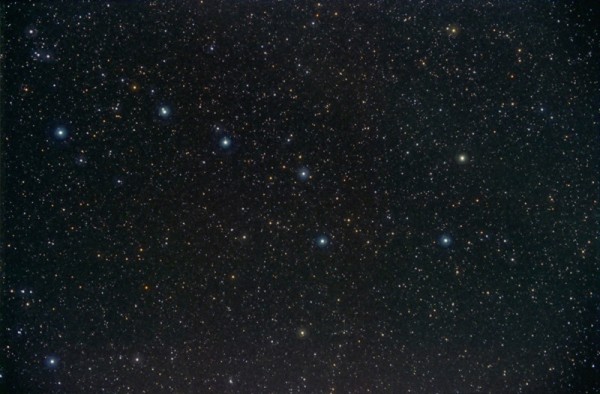
the bright stars in the constellation Orion (particularly the "belt"),

the Pleiades, otherwise known as the Seven Sisters,
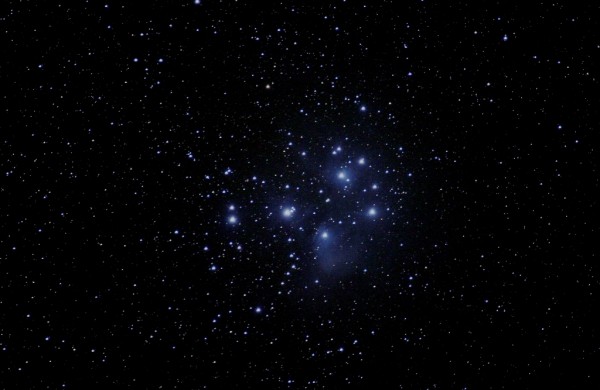
and Cassiopeia, the giant "W".
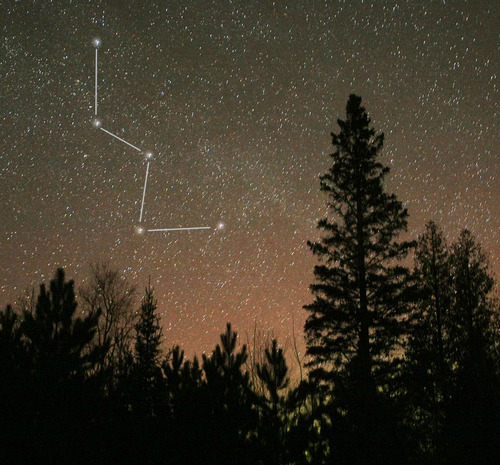
And if you're farther south, you probably know the extraordinarily bright Canis Major (big dog),
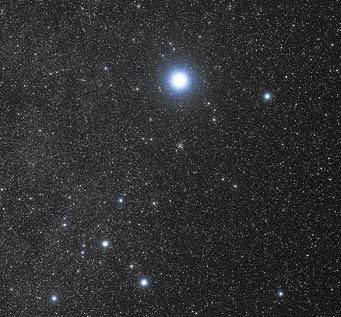
as well as the Southern Cross and the two Pointer stars, which help you find the South Celestial Pole.
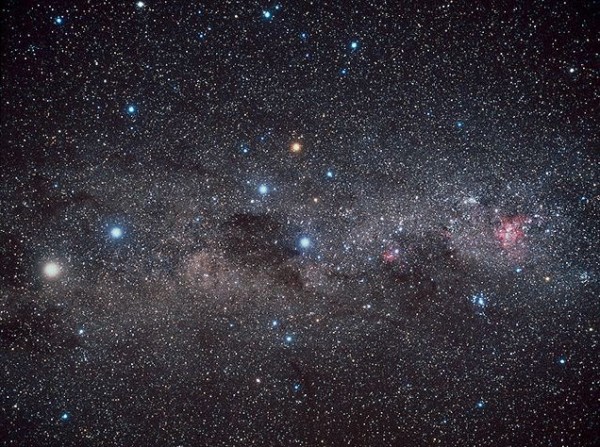
If you've been coming by for a while, you probably also know that we classify stars into seven different types, based on how intrinsically bright and blue they are: O B A F G K and M.

The brightest stars are also the rarest ones -- only about 0.2% of stars are O or B stars -- and while you might have heard that our Sun, a G-type star, is pretty common, we're actually brighter than about 95% of the stars in the sky! Why's that? Because 3 out of every 4 stars are M-stars: red dwarfs.
But this doesn't mean that the ones that appear brightest have to actually be intrinsically bright; they could just be close to us! So what's more important, brightness or closeness? Let's learn what the brightest stars are! (Not including the Sun, obviously!)
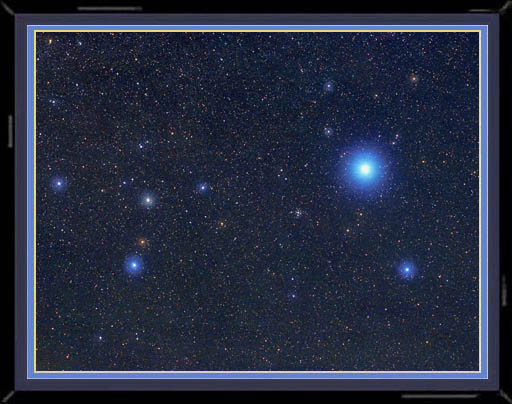
Sirius, found in the constellation of the big dog (Canis Major), is by far the brightest star in the night sky. It's close -- only 8.7 light years away -- it's bright, being an A star, and it's so bright that it often outshines many of the planets.
But the second brightest? Unless you live in the South of Africa, South America, or New Zealand, you probably don't know well at all. (Those are the only locations where it's always visible.)
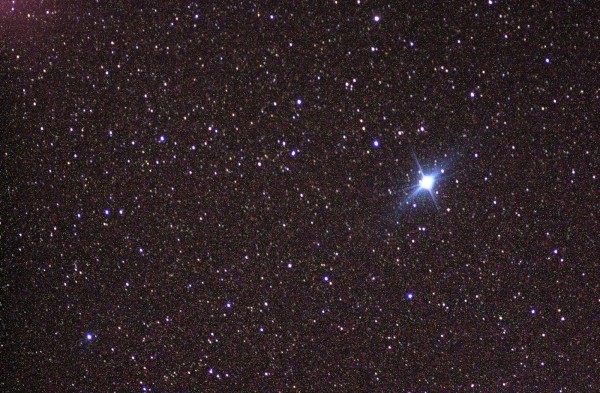
Although it's less than half as bright as Sirius, Canopus is over 300 light years away! But Canopus is quite far south, sort of isolated in the sky from other bright stars, and practically invisible to the Northern Hemisphere.
But I bet you know #3, even if you've never seen it.
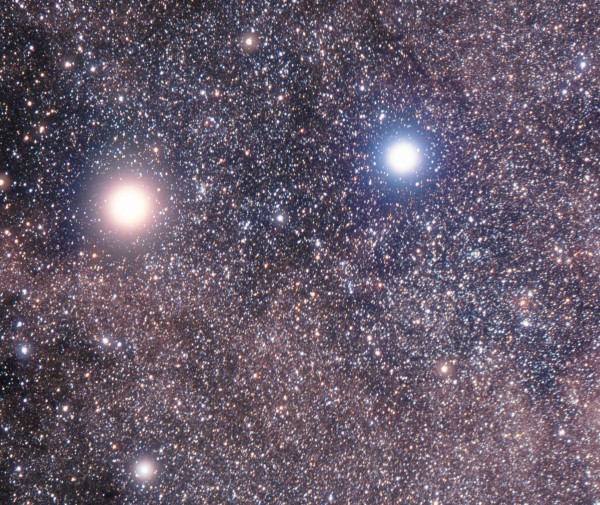
Alpha Centauri, at just 4.4 light years away, is the same type of star as our Sun. But it's the closest bright star to us, and (combined with its binary companion) appears to be the 3rd brightest star in the sky! We've already seen this, of course: Alpha Centauri is the brighter of the two "pointer" stars that help you find the South Celestial Pole!
You've got to be asking yourself, then, what the deal is with that "other" pointer star?
Believe it or not, Beta Centauri, the slightly dimmer, blue one, is #10 in brightness in the sky! But it couldn't be more different. One of the most intrinsically bright stars, Beta Centauri is one of the brightest B-stars we have, and is located (depending on who you ask) up to 500+ light years away!
But what about those of us stuck up here in the Northern Hemisphere? What do we get?
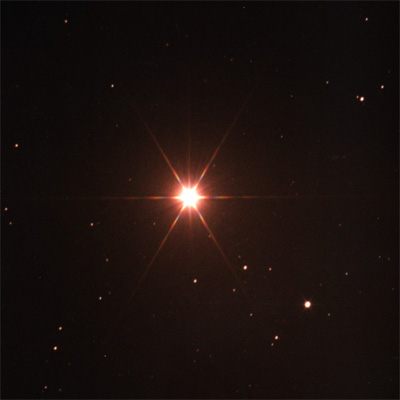
Well, we've got the orange giant, Arcturus, which is well known for being a "runaway" star, not gravitationally bound to any of the stars around it, and coming in at #4 in brightness in the night sky. (Being a giant star, it matters less that it's a cool, K star.)
And in the Summer, the Northern Hemisphere gets the following constellation:
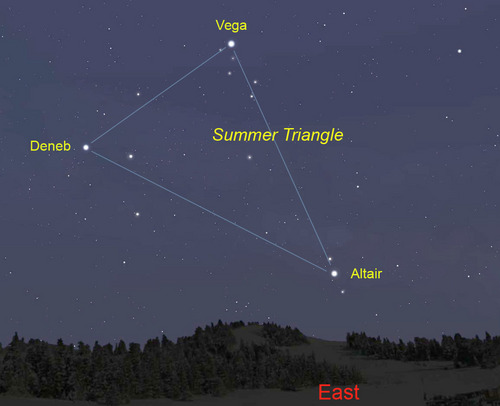
The Summer Triangle! Consisting of Vega, the #5 star, Altair (#12), and Deneb (#19) -- all blue A stars -- you'll know it when you see it.
But what about those constellations you know so well? Do they have anything worth mentioning? Well, the Big Dipper's brightest star only comes in at #33, and Cassiopeia's brightest only lands at #67. But Orion is a true gem.
The brightest blue star, Rigel, is a whopping 770 light years away: a blue supergiant -- a B-star -- and the sixth brightest overall. The super bright red star is Betelgeuse, the red supergiant -- an M-star -- 640 light years away, and the eighth brightest star in the sky. And on the same side of the belt as Betelgeuse is Bellatrix (thanks, @1 and @2), which comes in at #27, pretty impressive in its own right!
But Orion's belt also features three ultra-bright, blue stars.
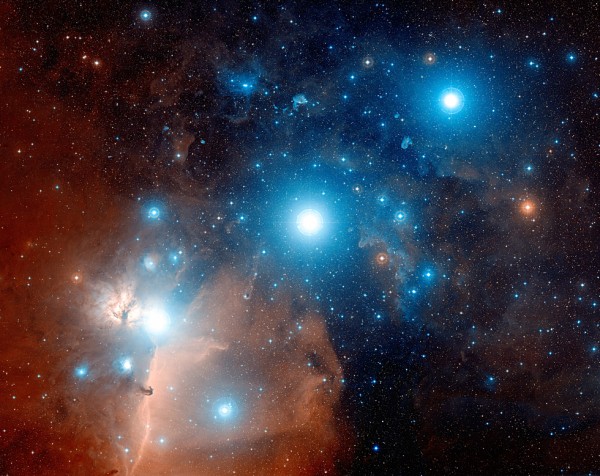
Mintaka, Alnilam and Alnitak are all blue supergiants. Mintaka is actually a double star, although is less remarkable at "only" #62, which still makes it brighter than all the stars in Cassiopeia! Alnilam and Alnitak, however, weigh in at #30 and #31 in brightness, respectively.
While Mintaka and Alnilam are (primarily) bright B-stars, Alnitak is the rarest (and bluest) of all the star types: a Class O-star!
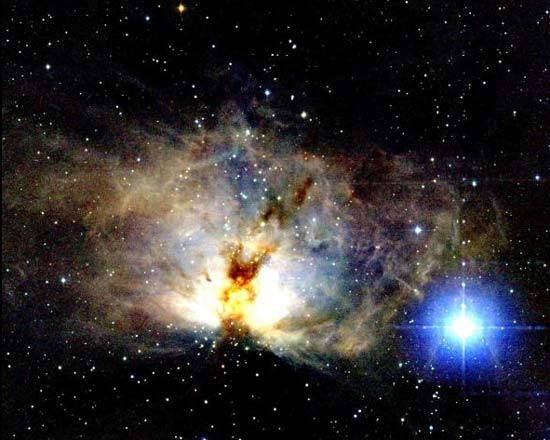
This isn't all of them, of course, but those are some of the more remarkable bright stars in the night sky; some are cool, some are hot, some are blue (or UV) and some are red, some are near and normal, some are distant and spectacular. But all of them give off light that travels years through space, reaches our eyes, and appears as just a slightly brighter point to us than the rest of space around it. And those are our brightest stars!

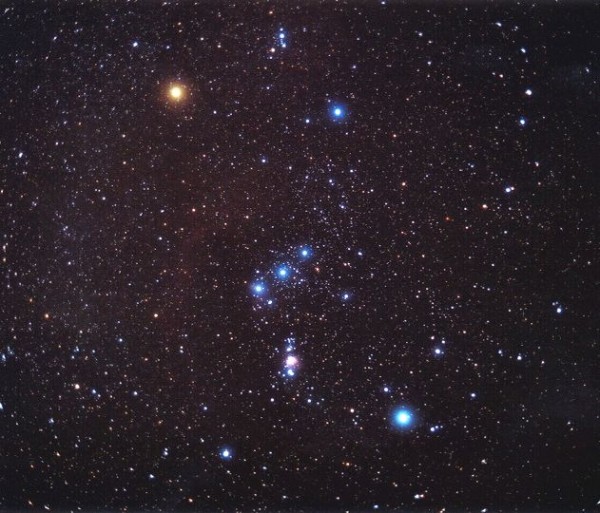
The Summer Triangle is not a constellation; you won't find it anywhere on the list of 88. It's an asterism
And, Bellatrix is Orion's left shoulder (from 'his' point of view; on the right as we look at 'him'; west shoulder if you prefer, unless I got things backwards; I'm not immune to mistakes myself, e.g. excessive parentheticals). Mintaka is the other star in the Belt, along with the Alnilam & Almitak that you mentioned. I have no idea where it fits in the list of nth brightest stars, but I believe it's the least bright of the three Belt stars.
I'm not immune to mistakes
I, however...
Randy's right.
Also, most lists I've seen put Capella at #6, brighter than Rigel. Not that the difference is visible to the naked eye, though the colour contrast is.
@1 and 2... yikes on the Bellatrix! Time to make some edits to the post!
BTW, I loathe calling asterisms "asterisms" instead of constellations; pretty much everyone has an interest in the night sky, but only the people I know who are really interested in astronomy know what an asterism is. I think they should all be called constellations, especially the common ones like "winter hexagon" and "summer triangle". But I go back-and-forth on it: do I try and raise the level of discourse, or do I try to be understood by more people? That's a question without an easy answer...
My vote for bestest constellation evah is Orion. Easily recognizable, it's high in the sky, bright and visible even with heavy light pollution. It's a warm familiar sight on a cold winter's night.
I really enjoyed this blog because I never knew any of these things before you posted it. Iâm probably the common person that loves to watch the night sky but doesnât really know anything about it. Iâve always loved astronomy and wanted to learn more about it. Keep posting great blogs, thanks!
If you have never used a star chart before, remember that the size (in arch diameter) of each constellation is much greater than you may expect. When viewing a flat star chart, you may get the impression that Orion is a compact constellation; in reality, it is BIG.
And remember the dotted line called the ecliptic. Odds are, there may be a bright planet on it, and it will totally distort the pattern you expect to see. When I tried to locate the constellations first -in 1977- Jupiter was on the ecliptic near the Pleiades, and I was going crazy before I worked out what was wrong!
--- --- --- --- --- ---
Factoid: Vega -and many other relatively bright stars in all directions- actually originated in the same star association that makes up the bright stars in The Big Dipper. The association is 70 light years away, but since it lacks the gravity to hold on to the stars, most original members have drifted far away (even to the opposide side of our sun) and are only recognisable by making careful measurements of their movement through space, which takes them on a line from the Big Dipper stars.
This is because stars do not form in isolation. Like the Pleiades, you need a *big* nebula for it to start contracting, and then it forms a bunch of stars.
In regard to "asterisms" -could you some time post star charts with easy-to-remember patterns pointing to naked eye stars known to have planets? It would be great for evening excursions with school kids: "Remember the pattern on the map you got, it is up there, and *there* is a star we know has planets circling it" (kids going crazy with excitement)!
Whenever I discuss the night sky, I am careful to point out the difference between asterisms and constellations for a couple of reasons.
Constellations are often attached to a mythology. While Ursa Major is most often "translated," there are at least two or three well-known sky cultures for the major stars. Asterisms in one culture may be parts of one or more constellations in another. However, in the commonly accepted sky culture of today, asterisms lack a significant mythological or historical birth.
Also, when I tell people about the differences between asterisms and constellations, it's a simple fact that they can take away and feel like they've been included in something that's "advanced" or "sciencey." I think it's silly now, but there was a time when I relished such simple insight.
I tend to lean toward the Feynman idea of popular science. The only reason people don't know asterisms is because we're not talking about them. You don't teach your children to speak by cooing and ga-gaing at them. If you're speaking to an audience and no one is asking you to explain something, it's my position that you're not doing an adequate job.
That being said, it cannot be stressed enough that jargon is not content. Jargon is not content. Jargon is a placeholder for knowledge previously acquired (or an opportunity to impart knowledge), nothing more.
Ethan, I'm a big fan. Over the last year I have bought myself three layman's astronomy books and have memorized the 25 brightest stars (relative brightness as seen from earth, not absolute brightness). My list gives Capella as #6 and Rigel as #7. Also, Betelgeuse is given as #10 - preceded by Procyon (the Little Dog) at #8 and Achernar (Alfa Eridani) at #9.
It seems to me that all the brightest stars are visible down here in the Southern hemisphere (I live at 26 deg S), as I have seen all 25 - with Capella and Deneb rather low on the horizon and not visible all year round. My favourite constellation for naked eye viewing has to be Scorpio - with Antares (#15), Shaula (#25) and Girtab in there. And Canopus at 1175 light years distance and -8.5 brightness is THE rock star.
Wow! I looked up tonight - April 13, 2011 @ 9:30 p.m. EST -(for my umpteen time) and the stars are simply beautiful! I tried to locate Orion Belt.
I was facing north, and to my left I saw this bright flickering star... I wonder is it sirius? I was beautiful.
Can someone comment on this? Could it of been Sirius?
Lynn,
There's a good chance that you are looking at the Orange Giant, Arcturus, 4th brightest in the sky. Here's how you can tell.
Find the Big Dipper. If you follow the two pointer stars, you'll run into the North Star, Polaris. But if you follow the curve of the handle, it will lead you very close to Arcturus.
Or, if you go the other way, take the upper two stars of the "cup" part of the dipper and follow a line away from the handle. When you run into a really bright thing, that's Capella! Capella is actually four stars: two pairs of binaries, one of close yellow giants and one of distant red stars.
I think one of those two -- Arcturus or Capella -- is likely the one you are looking at. Hope this helps!
"In regard to "asterisms" -could you some time post star charts with easy-to-remember patterns pointing to naked eye stars known to have planets?"
A lovely little asterism for binocular use is "The Coathanger" or Cr399 between the three constellations Aquila, Cygnus and Lyra:
http://en.wikipedia.org/wiki/Brocchi%27s_Cluster
And then there's the ET cluster (Caldwell 13):
http://en.wikipedia.org/wiki/NGC_457
Which really requires a telescope and >30x magnification.
Leo is pretty obvious a constellation too, once you've worked out the head, trailed along the feet down to the tail. Hercules always throws me, mind. That little prancing pooftah always seems to be upside down and doing cartwheels so working out where the clucking bell he is is a chore.
Leo leads you on to Virgo and Hercules (and Corona Borealis).
dear sir or madam
this is gonna sound stupid but im gonna ask you anyway so here it goes
i live in wellington nz and when i look up into the night sky and towards the south island i see a star that is so bright that im not sure i have noticed it b4
first i believed i was mad but i hope you can shed some light on the star or give me some directions towards some soft ware or a web site i can visit to find out more information about its origins
thank you for your time
i look forward to hearing from you
mike
p.s I believe the brightest star in the sky is in the leo constellation so maybe its leo
At this time in September 2015 to give you a time reference, I live near the light polluted skies of New Orleans. As an avid fan of astronomy, I am bugged by this very bright star and rather lonely, because no other bright star is near it. I keep hearing Saturn, but that is in the southwest sky and among other bright stars. Can't be Venus, as it has passed up the Earth in its much faster rotation and is now shining very bright in the morning. This bright star seems to set around 10 p.m. CST and as I mentioned, is all alone ine western sky, and not too high up either when the Sun sets. It must be a popular star, although I'm only guessing, because I live as mentioned in an area that city lights dominate. I see only a few stars at night, and this is one of them. I already ruled out any of the five visible planets. And Beetlegeuse, (probably not spelled correctly ) is in the southern sky from my line of sight. The star maps have been no help. Only showing me that summer triangle which I di see, but at sunset it's quite high. Almost directly overhead. Need to know. It's like a vendetta now. Thanks.
Shane,
It's probably Arcturus, which clocks in at #4.
@15 Shane
Go get yourself a free copy of 'Stellarium' so that you can find your way amongst the stars and other exciting objects. :)